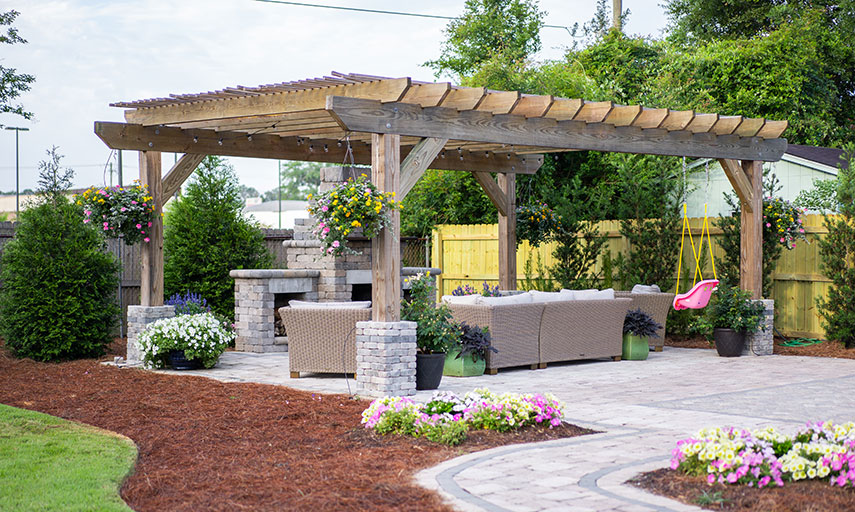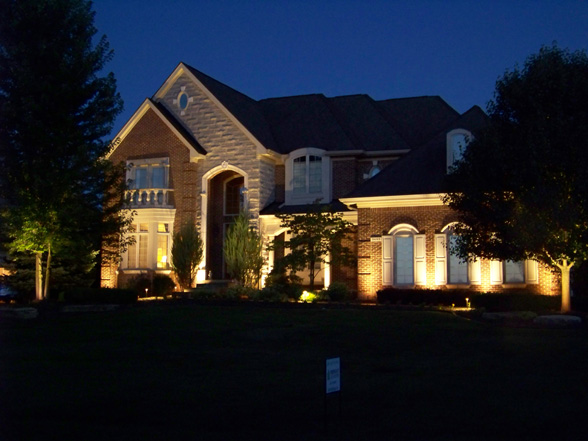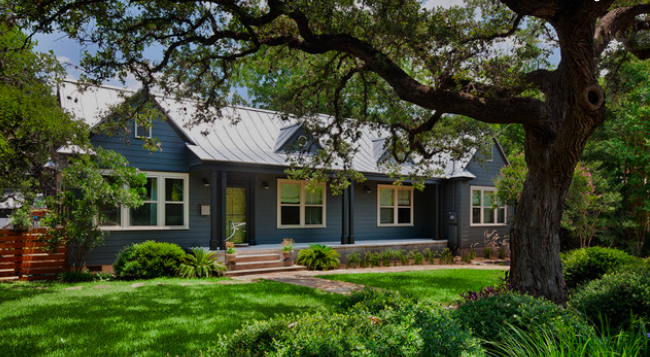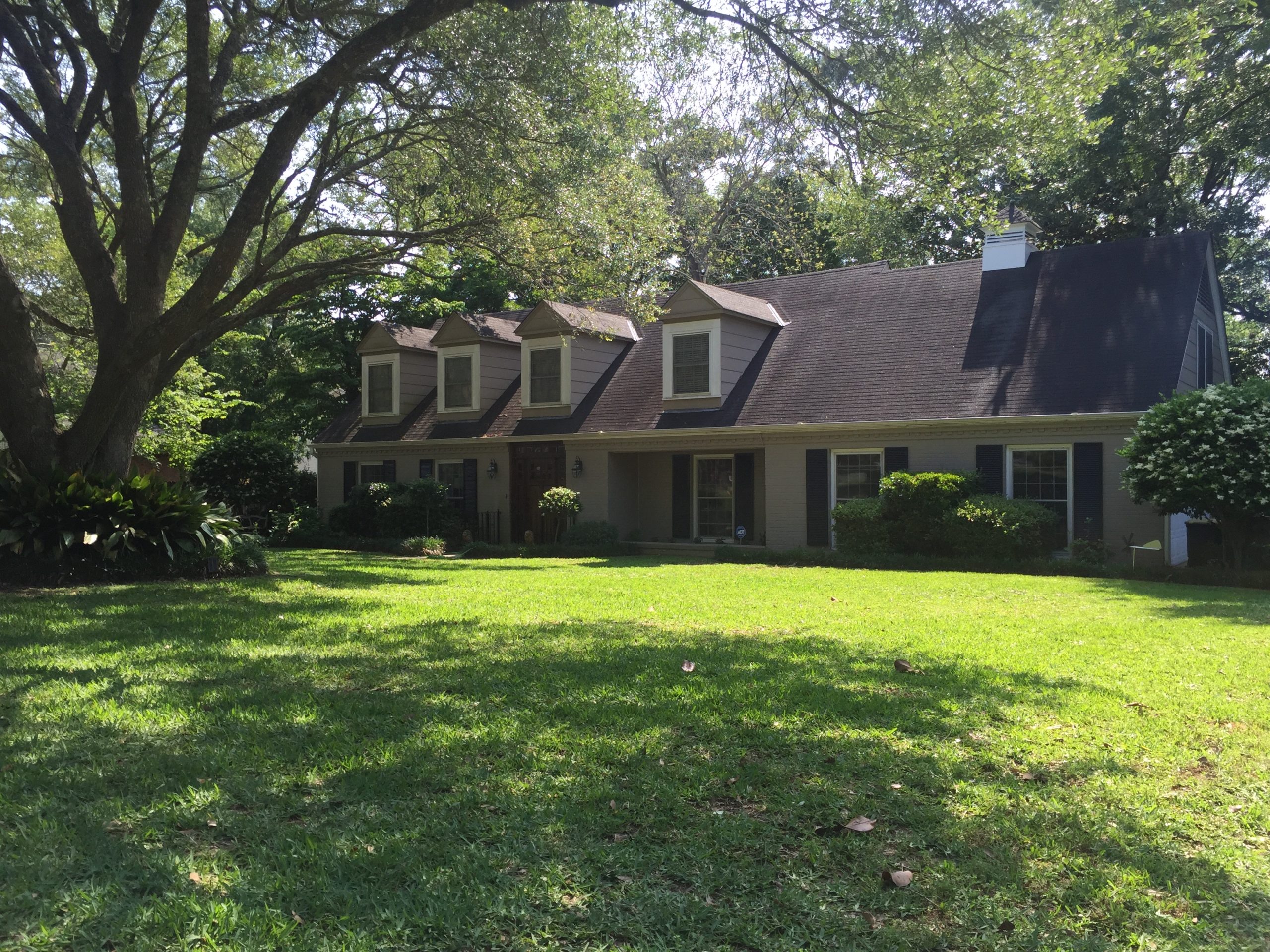
When to Fertilize Your Alabama Lawn
April 21, 2021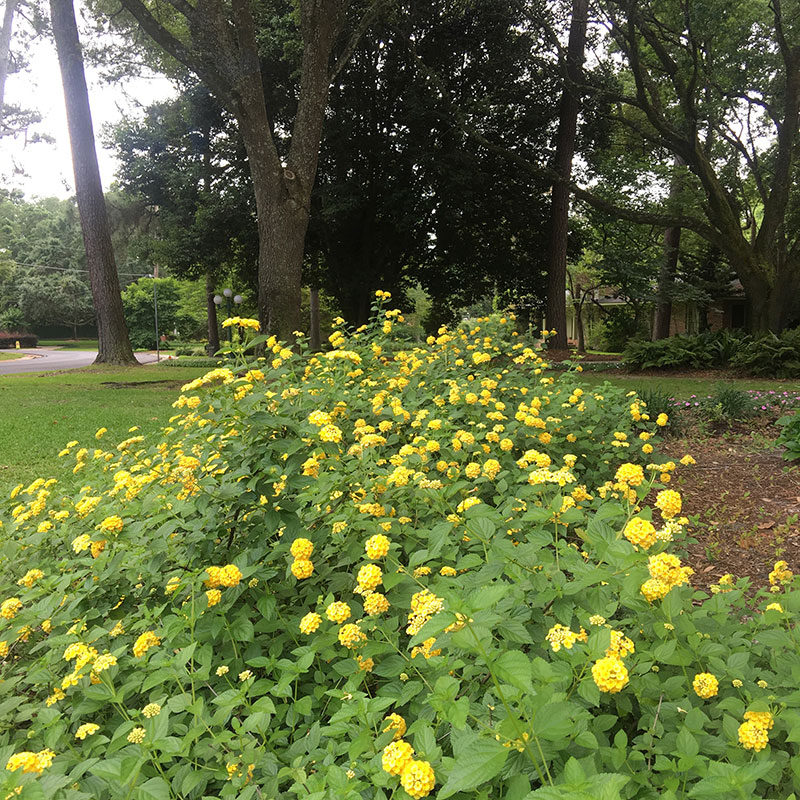
An Introduction to Landscape Installation
April 22, 2021Spring is here, and that means it’s time to freshen up your beds. Every year at this time, property owners face the difficult task of deciding what material to lay in their landscape beds for the best look and benefits. In our area, it often comes down to two choices: pine straw or mulch.
So which is better? Unfortunately, it’s not that simple. Although they have a similar function, these materials are quite different – and they each bring their own list of pros and cons to your landscape health and beauty.
To help you make an informed decision, let’s look at the specifics of pine straw vs. mulch.
Pros of Pine Straw
It’s less expensive. Pine straw is extremely affordable compared to mulch. If you live in an area with heavy pine trees, it may even be free!
Easier to spread. Because it’s so thin and light-weight, pine straw is easy to transport and can be spread quickly by hand. One bale of pine straw can cover 40 to 50 square feet of landscape.
Erosion control. Pine straw doesn’t wash away like other forms of mulch, making it a great tool for protecting against soil erosion. It’s a good choice for sloped landscapes or areas prone to inclement weather.
Eco-friendly. Pine straw doesn’t require heavy grinding machinery to manufacture, making it better for the environment.
Visual appearance. Pine straw is naturally uniform in appearance, giving your beds a clean and polished look. It’s neutral colors will also highlight your plants and shrubs and provide a natural backdrop for ornamental decorations.
Cons of Pine Straw
Shorter lifespan. Pine straw needs to be refreshed more frequently than mulch, typically 2-3 times per year. Because it is so light-weight, it is easily blown out of your beds (and all over your yard). It also changes its color as it ages, losing its aesthetic appeal over time.
Safety hazard. Dry pine needles are extremely flammable, making old or degraded pine straw a common fire safety hazard.
Acid levels. Pine straw can make your soil extremely acidic, which is not ideal for many plants.
Pros of Mulch
Better performance. Although they both help improve your soil, mulch is the clear winner in this regard. It is more compact, making it a better moisture barrier for plants and shrubs. It also prevents sunlight from reaching the soil, giving it increased weed control.
Easier clean-up. Mulch is not as fine as pine straw, making it much easier to remove leaves, sticks, and other debris from your beds. It’s also heavier, meaning it won’t blow around in the wind.
More variety. You can find organic mulch in a large range of colors, textures, and materials. This makes it easy to find a mulch that suits your style, and it can even be changed annually or seasonally for a whole new look.
Cons of Mulch
More expensive. Prices vary by location, but mulch is typically 2-3 times the price of pine straw.
Less cover. Those bags of mulch may not go as far as you think. Because of its dense texture, you’ll need more mulch to cover the same area of space.
Harder to spread. Compared to pine straw, applying mulch can be a long and labor-intensive process. It also takes more strategy – if it’s layered too thickly it can suffocate plant roots and attract insects and other pests.
Ultimately, choosing between pine straw and mulch is a matter of personal preference – and there’s no reason you can’t choose both! Apply pine straw to large backyard spaces or around your azaleas (they’ll appreciate the acidity) and use mulch in your front yard beds to add a pop of curb appeal.
If you still need help, our expert landscapers can talk through your needs and help you choose the best product for your plants and property. Contact us today!


